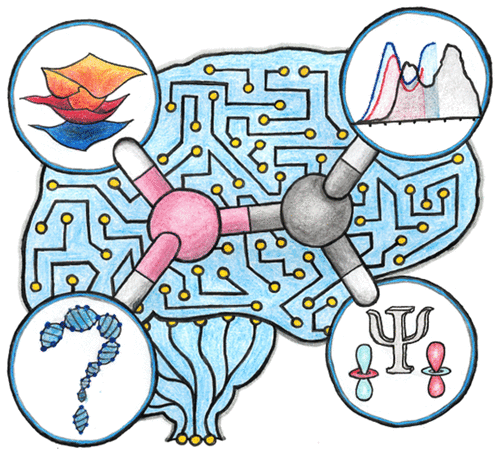当前位置:
X-MOL 学术
›
Chem. Rev.
›
论文详情
Our official English website, www.x-mol.net, welcomes your
feedback! (Note: you will need to create a separate account there.)
Machine Learning for Electronically Excited States of Molecules
Chemical Reviews ( IF 51.4 ) Pub Date : 2020-11-19 , DOI: 10.1021/acs.chemrev.0c00749 Julia Westermayr 1 , Philipp Marquetand 1, 2, 3
Chemical Reviews ( IF 51.4 ) Pub Date : 2020-11-19 , DOI: 10.1021/acs.chemrev.0c00749 Julia Westermayr 1 , Philipp Marquetand 1, 2, 3
Affiliation

|
Electronically excited states of molecules are at the heart of photochemistry, photophysics, as well as photobiology and also play a role in material science. Their theoretical description requires highly accurate quantum chemical calculations, which are computationally expensive. In this review, we focus on not only how machine learning is employed to speed up such excited-state simulations but also how this branch of artificial intelligence can be used to advance this exciting research field in all its aspects. Discussed applications of machine learning for excited states include excited-state dynamics simulations, static calculations of absorption spectra, as well as many others. In order to put these studies into context, we discuss the promises and pitfalls of the involved machine learning techniques. Since the latter are mostly based on quantum chemistry calculations, we also provide a short introduction into excited-state electronic structure methods and approaches for nonadiabatic dynamics simulations and describe tricks and problems when using them in machine learning for excited states of molecules.
中文翻译:

分子电子激发态的机器学习
分子的电子激发态是光化学、光物理学和光生物学的核心,并且在材料科学中也发挥着重要作用。他们的理论描述需要高精度的量子化学计算,这在计算上是昂贵的。在这篇综述中,我们不仅关注如何利用机器学习来加速这种激发态模拟,还关注如何利用人工智能的这一分支在各个方面推进这一令人兴奋的研究领域。讨论的激发态机器学习应用包括激发态动力学模拟、吸收光谱的静态计算以及许多其他应用。为了将这些研究纳入背景,我们讨论了所涉及的机器学习技术的前景和陷阱。由于后者主要基于量子化学计算,我们还简要介绍了激发态电子结构方法和非绝热动力学模拟方法,并描述了在分子激发态机器学习中使用它们时的技巧和问题。
更新日期:2020-11-19
中文翻译:

分子电子激发态的机器学习
分子的电子激发态是光化学、光物理学和光生物学的核心,并且在材料科学中也发挥着重要作用。他们的理论描述需要高精度的量子化学计算,这在计算上是昂贵的。在这篇综述中,我们不仅关注如何利用机器学习来加速这种激发态模拟,还关注如何利用人工智能的这一分支在各个方面推进这一令人兴奋的研究领域。讨论的激发态机器学习应用包括激发态动力学模拟、吸收光谱的静态计算以及许多其他应用。为了将这些研究纳入背景,我们讨论了所涉及的机器学习技术的前景和陷阱。由于后者主要基于量子化学计算,我们还简要介绍了激发态电子结构方法和非绝热动力学模拟方法,并描述了在分子激发态机器学习中使用它们时的技巧和问题。











































 京公网安备 11010802027423号
京公网安备 11010802027423号